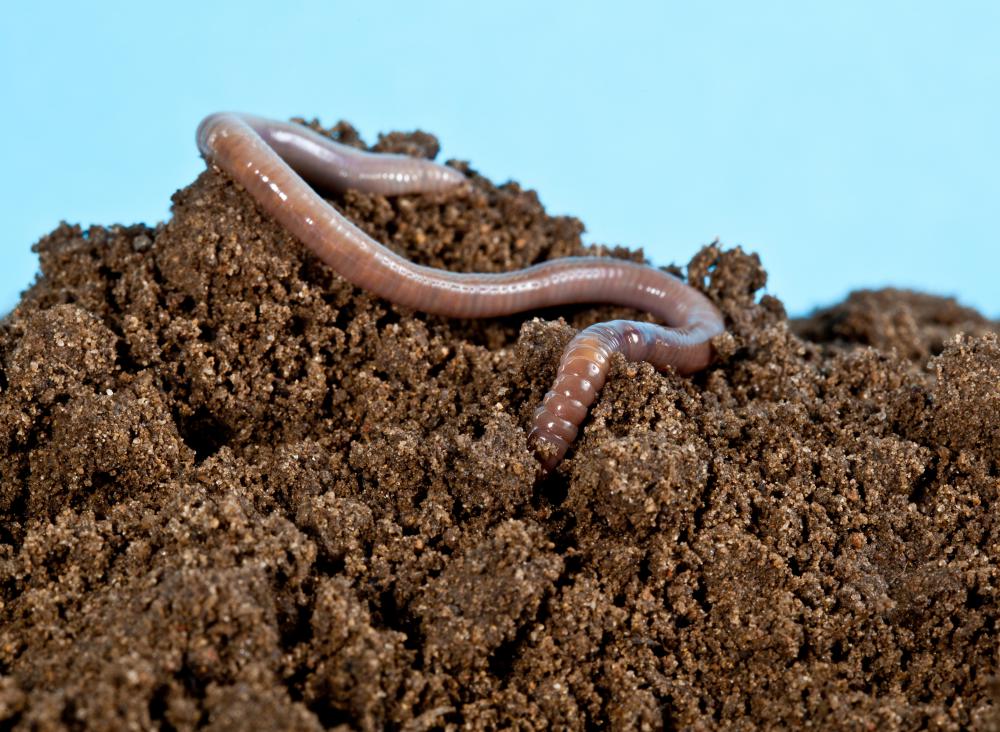At AllThingsNature, we're committed to delivering accurate, trustworthy information. Our expert-authored content is rigorously fact-checked and sourced from credible authorities. Discover how we uphold the highest standards in providing you with reliable knowledge.
What Is a Leatherback Bearded Dragon?
A leatherback bearded dragon is a morph of a type of lizard called a bearded dragon. These lizards are a product of selective breeding, and although it is possible that they exist in the wild, they are primarily thought to be products of the pet trade. The leatherback morph, or mutation, creates smaller scales than those of a non-leatherback bearded dragon, there is a leather-like feel to the lizard's skin. Two leatherbacks might produce a silkback — or essentially scaleless — lizard.
The morph itself is the result of a mutated gene involved in scale development. The mutation inhibits proper scale growth, leaving the lizards with smaller, smoother scales. In addition to the leathery feel, colorings in leatherbacks usually are brighter. This is a heterozygous mutation, meaning that only one of the two alleles in the gene for scale production carries the mutation. When the gene is homozygous, which is when both alleles in the gene carry the mutation, a silkback bearded dragon is produced.

Sometimes called an Italian smoothie, the leatherback bearded dragon was first discovered by a breeder in Italy and since has become a popular pet choice in other areas of the world. There is an additional smoothie variation in the United States that seems to be the same morph simply under a different name, but it might have slightly thicker scales. These lizards generally are tan or yellowish but can be bred with bearded dragon color morphs to produce a variety of color combinations.
Native to Australia, bearded dragons are about 16-20 inches (40.6-50.8 cm) long. They have triangular heads; wide, flat bodies; and long tails. Their bodies, necks and heads have rows of spikes along them. These lizards often flare the skin on their throats, which, as their name indicates, makes them look bearded. They usually live for about 10 years.
These reptiles generally are docile and show interest in human attention, so the leatherback bearded dragon often makes a good pet. Easily bred in captivity, there is little chance of obtaining a wild-caught leatherback bearded dragon. Bearded dragons are active during daylight hours.
A pet leatherback bearded dragon should be kept in a tank that holds 55-60 gallons (208-227 liters) and is lined with carpeting or sand. Omnivorous, they can be fed a variety of greens as well as insects, earthworms and pinkie mice. They need full-spectrum lighting, with a general daytime temperature kept at 78-88 degrees Fahrenheit (25.5-31 degrees Celsius), although at night, the temperature might fall to nearly 70 degrees Fahrenheit (21 degrees Celsius). A warmer basking area, about 95-100 degrees Fahrenheit (35-37.7 degrees Celsius), also should also be provided.
Frequently Asked Questions
What is a Leatherback Bearded Dragon?
A Leatherback Bearded Dragon is a morph of the common bearded dragon species (Pogona vitticeps) known for its unique smooth back, which lacks the spiny scales typically found on standard bearded dragons. This trait gives them a distinctive leather-like appearance and texture, making them popular among reptile enthusiasts for their tactile and visual appeal.
How does the Leatherback mutation affect the dragon's care requirements?
The Leatherback mutation does not significantly alter the care requirements compared to standard bearded dragons. They still require a warm basking area, UVB lighting, and a diet of insects and vegetables. However, their smoother skin may make them slightly more sensitive to rough substrates, so owners should ensure their enclosure is appropriately outfitted.
Are Leatherback Bearded Dragons more prone to health issues?
Leatherback Bearded Dragons are not inherently more prone to health issues than their standard counterparts. As with all reptiles, proper husbandry is key to preventing common health problems. They require the same vigilant monitoring for signs of illness, such as lethargy, loss of appetite, or irregular stool, to ensure they remain healthy.
What is the lifespan of a Leatherback Bearded Dragon?
Leatherback Bearded Dragons have a lifespan similar to that of standard bearded dragons, which is typically between 10 to 15 years when cared for properly in captivity. Factors such as diet, habitat, and overall care can influence their longevity, emphasizing the importance of a well-maintained environment and regular veterinary check-ups.
Can Leatherback Bearded Dragons be bred with other morphs?
Yes, Leatherback Bearded Dragons can be bred with other morphs, and this practice is common among breeders looking to produce offspring with various desirable traits. However, breeding should be done responsibly, with consideration for genetic diversity and the health of the animals involved.
How can I tell if my Bearded Dragon is a Leatherback morph?
To determine if your Bearded Dragon is a Leatherback morph, examine its scales. Leatherback Bearded Dragons have smaller, smoother scales on their backs, giving them a sleek, almost shiny appearance. This is in contrast to the coarse, spiky scales of a standard bearded dragon. A reputable breeder or a herpetologist can help confirm the morph through visual inspection.
AS FEATURED ON:
AS FEATURED ON:











Discussion Comments
Bearded dragons should never be kept in an enclosure with sand.
Do not put sand in a bearded dragon's terrarium.
Post your comments